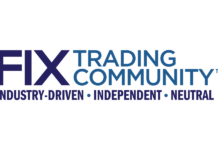An analysis of trading in the US Treasury space by Greenwich Associates has seen the proportion of electronic dealer-to-client activity (D2C) increasing in July, even as volumes and volatility fell. Interestingly dealer-to-dealer (D2D) activity also dropped during this month. Last month JP Morgan reported that electronic in Treasuries had increased directly as a result of COVID-19 with more traders becoming used to trading via screen.
Greenwich has found multiple causes for the overall drop in activity in the Treasuries market, including the withdrawal of market making activity, ongoing low interest rates, the holiday season leading to reduced engagement, and the cycle of lower volatility leading to less profitable trading, leading to less trading activity.
The reduced profitability of cash basis-trading strategies as a result of lower interest rates was cited by report author, Kevin McPartland as a contributor to the lower trading across both cash and derivatives markets, noting, “This basis trade had been a strong driver of futures market activity and as such has hurt overall market volumes.”
While overall average daily volume (ADV) was down 22% against June 2020 and down 8% against July 2019, volatility had fallen 18% from June and 25% from July last year. At the same time derivatives markets were subdued, with ADV for CME’s US Treasury futures in July lower by 41% against the same month in 2019.
The futures-to-cash volume ratio (calculated by dividing the UST futures volume by US Treasury cash market volume) averaged 45% in July compared to 64% the year before.
While the proportion of overall e-trading was flat month-on-month at 57% of volume, D2C e-trading volume increased by two percentage points to 49% from 47% in June.
Bloomberg and Tradeweb processed 52.6% of electronically traded volume in July, which was 29.4% of total volume, split roughly 50/50 between them, while trading on central limit order books was only 24% of the total market in July, which McPartland said was likely linked to the decline in basis trading.
“But even with volumes down, primary dealer net positions have continued to increase,” he wrote. “Dealer US Treasury holdings are up 4% in July compared to June, and up 9% from the same month last year. The makeup of those holdings look quite different from last year however. In July, Bills made up 38% of the portfolio by notional value. In July of 2019, Bills accounted for only 6%. This reflects the US government’s issuance over the past few months, that has led overall outstanding notional for Bills to grow in earnest since March.”
©Markets Media Europe 2025













